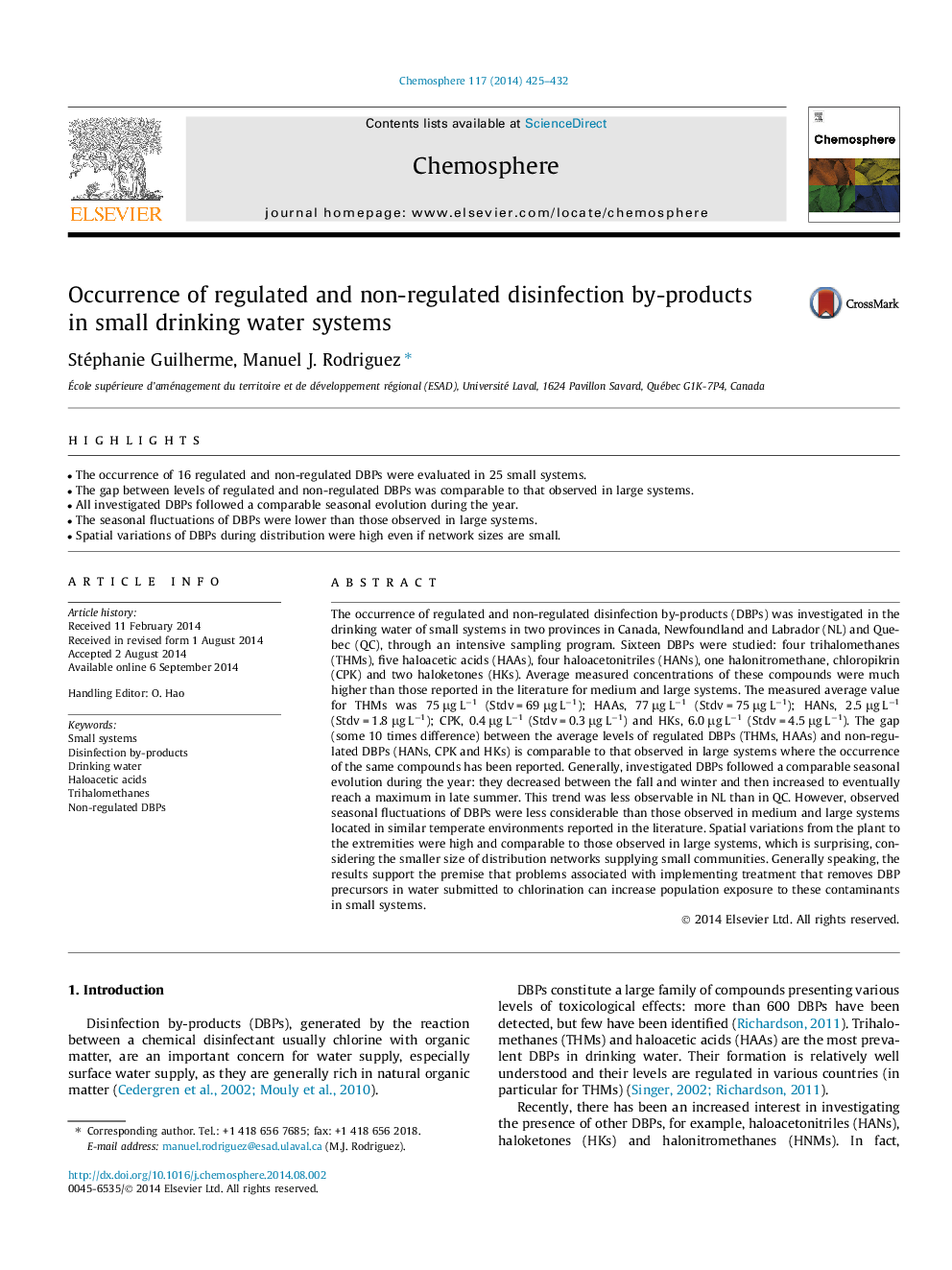| کد مقاله | کد نشریه | سال انتشار | مقاله انگلیسی | نسخه تمام متن |
|---|---|---|---|---|
| 6308481 | 1618854 | 2014 | 8 صفحه PDF | دانلود رایگان |
- The occurrence of 16 regulated and non-regulated DBPs were evaluated in 25 small systems.
- The gap between levels of regulated and non-regulated DBPs was comparable to that observed in large systems.
- All investigated DBPs followed a comparable seasonal evolution during the year.
- The seasonal fluctuations of DBPs were lower than those observed in large systems.
- Spatial variations of DBPs during distribution were high even if network sizes are small.
The occurrence of regulated and non-regulated disinfection by-products (DBPs) was investigated in the drinking water of small systems in two provinces in Canada, Newfoundland and Labrador (NL) and Quebec (QC), through an intensive sampling program. Sixteen DBPs were studied: four trihalomethanes (THMs), five haloacetic acids (HAAs), four haloacetonitriles (HANs), one halonitromethane, chloropikrin (CPK) and two haloketones (HKs). Average measured concentrations of these compounds were much higher than those reported in the literature for medium and large systems. The measured average value for THMs was 75 μg Lâ1 (Stdv = 69 μg Lâ1); HAAs, 77 μg Lâ1 (Stdv = 75 μg Lâ1); HANs, 2.5 μg Lâ1 (Stdv = 1.8 μg Lâ1); CPK, 0.4 μg Lâ1 (Stdv = 0.3 μg Lâ1) and HKs, 6.0 μg Lâ1 (Stdv = 4.5 μg Lâ1). The gap (some 10 times difference) between the average levels of regulated DBPs (THMs, HAAs) and non-regulated DBPs (HANs, CPK and HKs) is comparable to that observed in large systems where the occurrence of the same compounds has been reported. Generally, investigated DBPs followed a comparable seasonal evolution during the year: they decreased between the fall and winter and then increased to eventually reach a maximum in late summer. This trend was less observable in NL than in QC. However, observed seasonal fluctuations of DBPs were less considerable than those observed in medium and large systems located in similar temperate environments reported in the literature. Spatial variations from the plant to the extremities were high and comparable to those observed in large systems, which is surprising, considering the smaller size of distribution networks supplying small communities. Generally speaking, the results support the premise that problems associated with implementing treatment that removes DBP precursors in water submitted to chlorination can increase population exposure to these contaminants in small systems.
Journal: Chemosphere - Volume 117, December 2014, Pages 425-432
